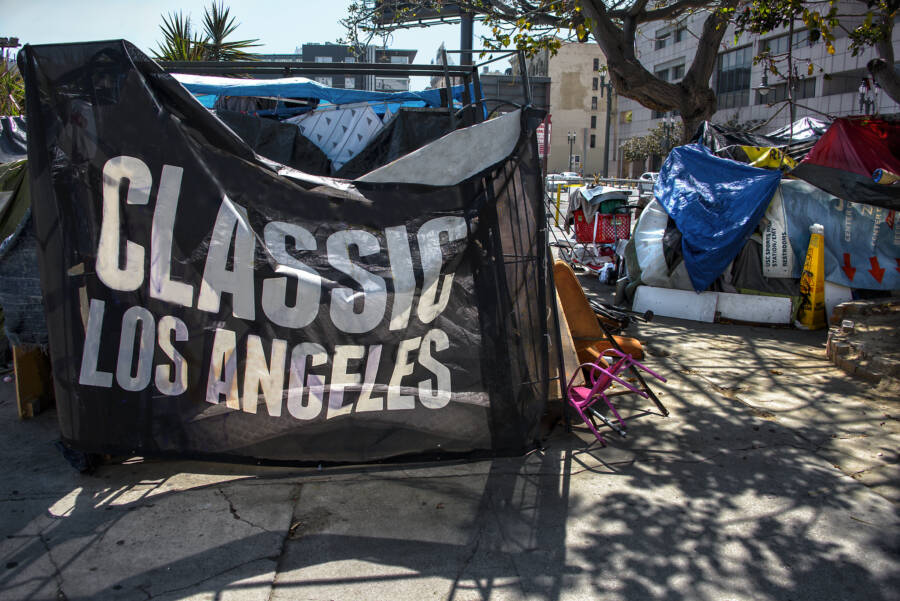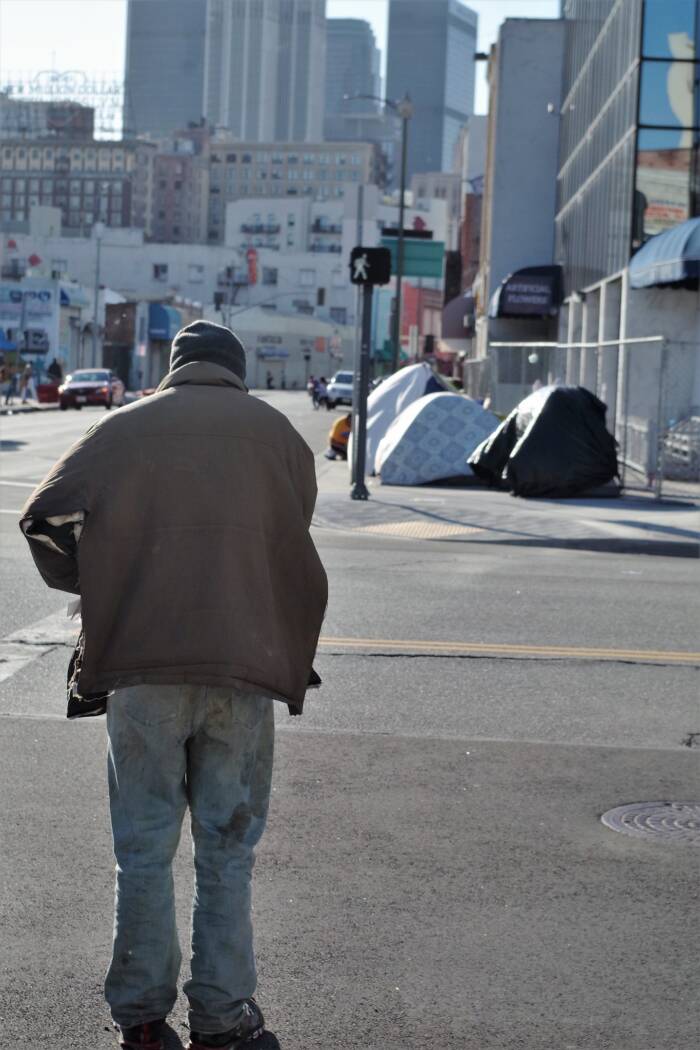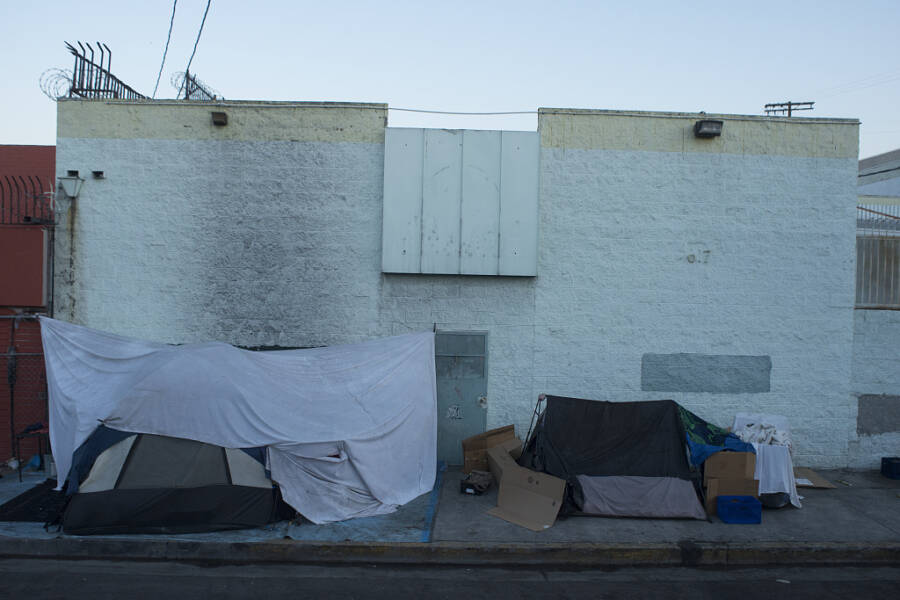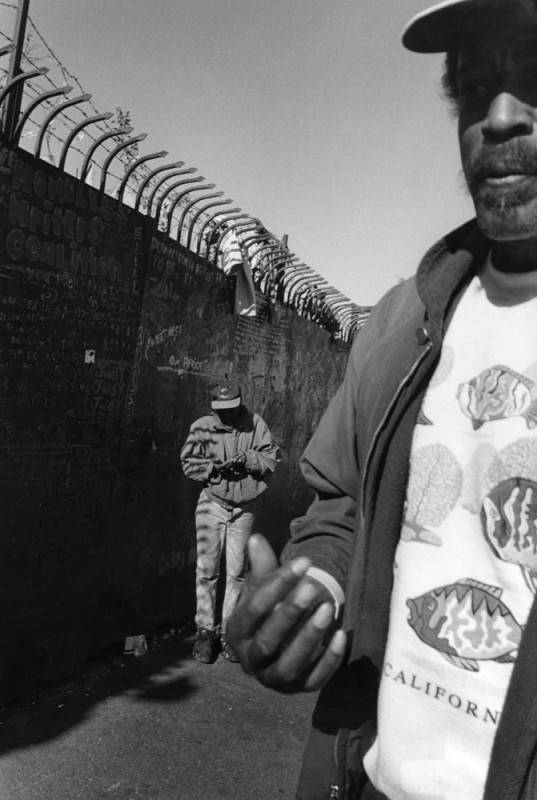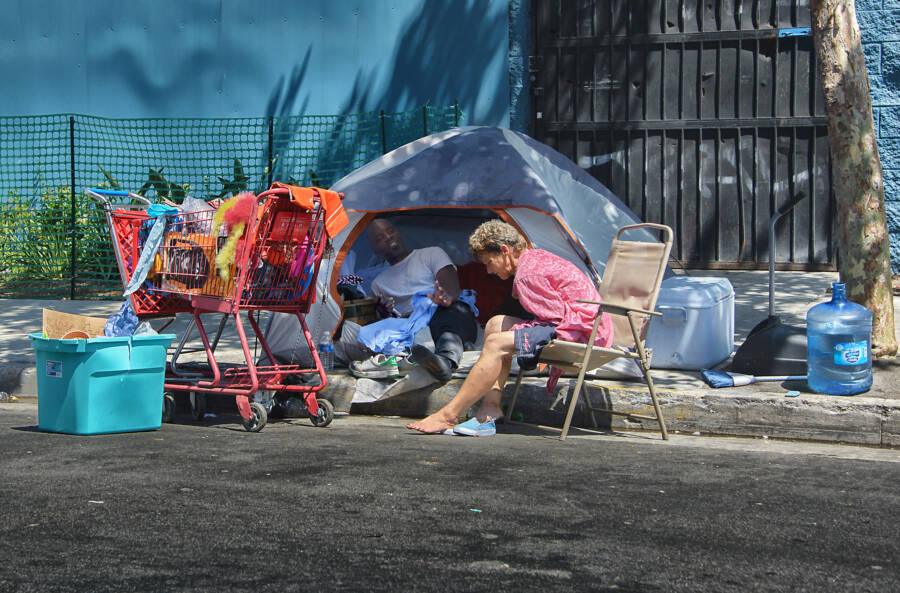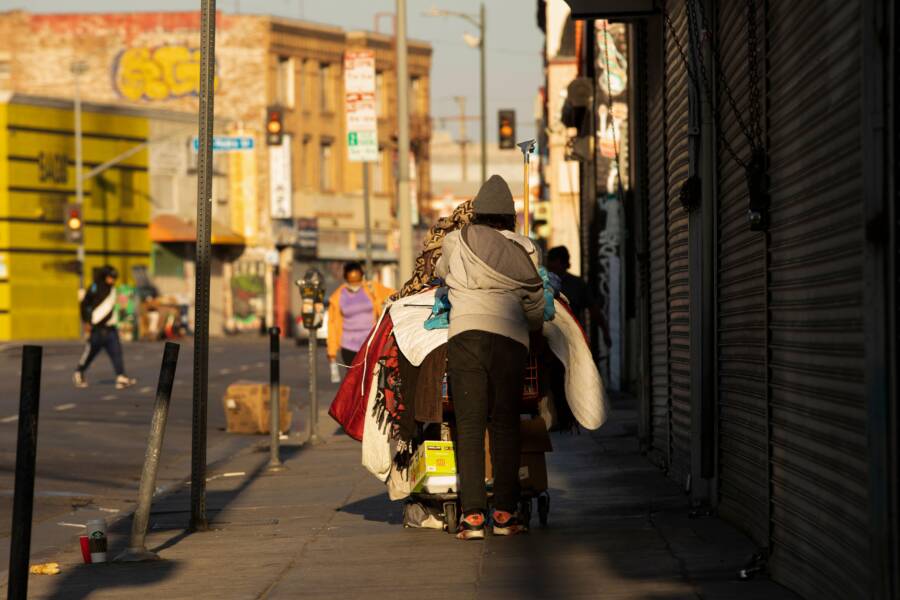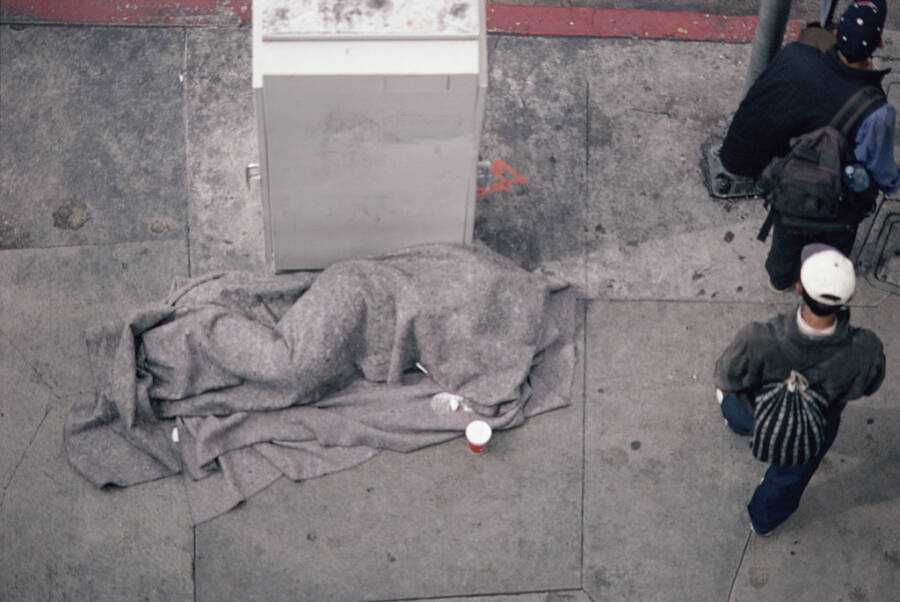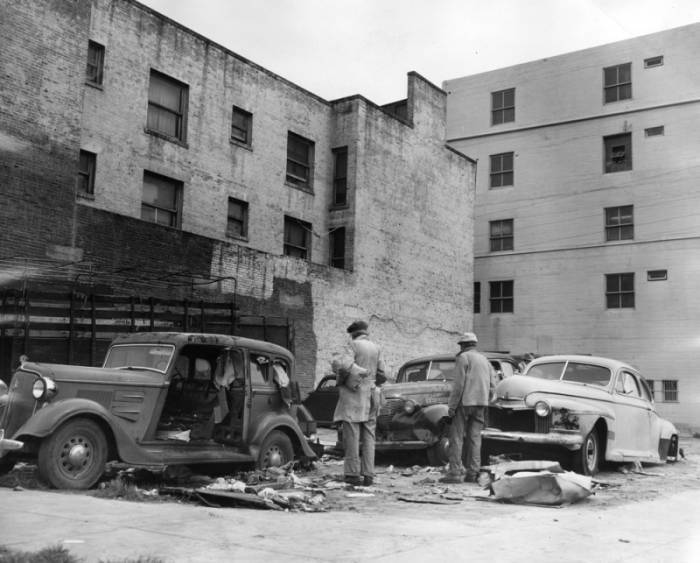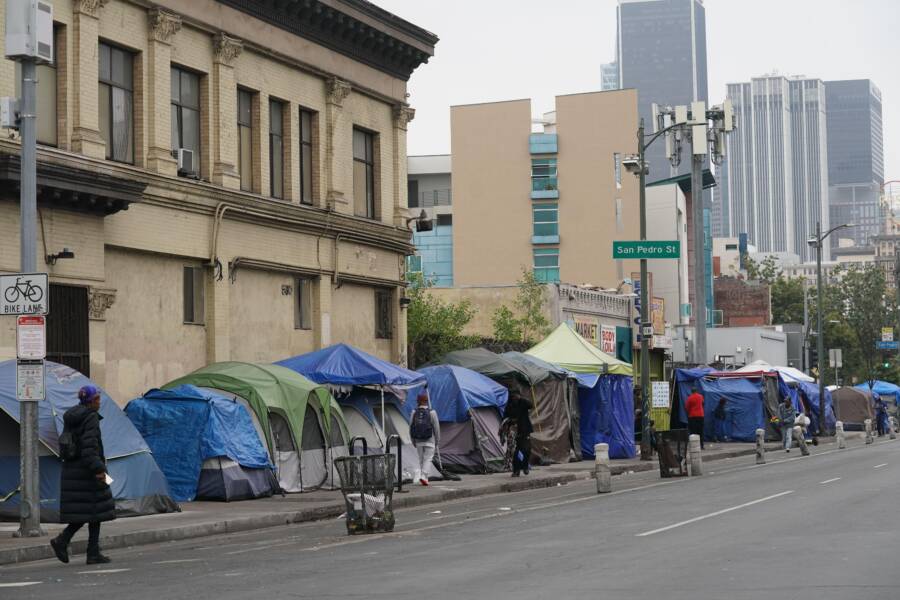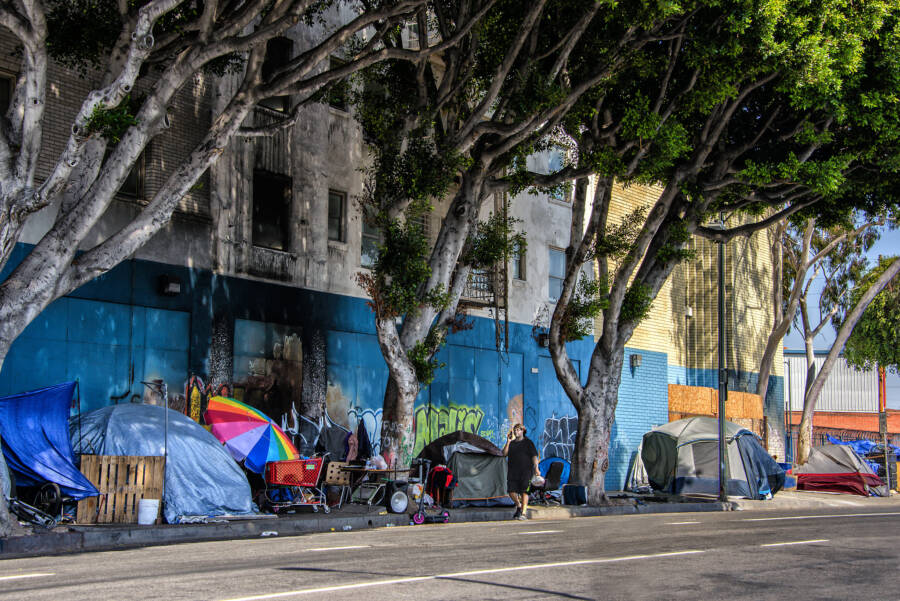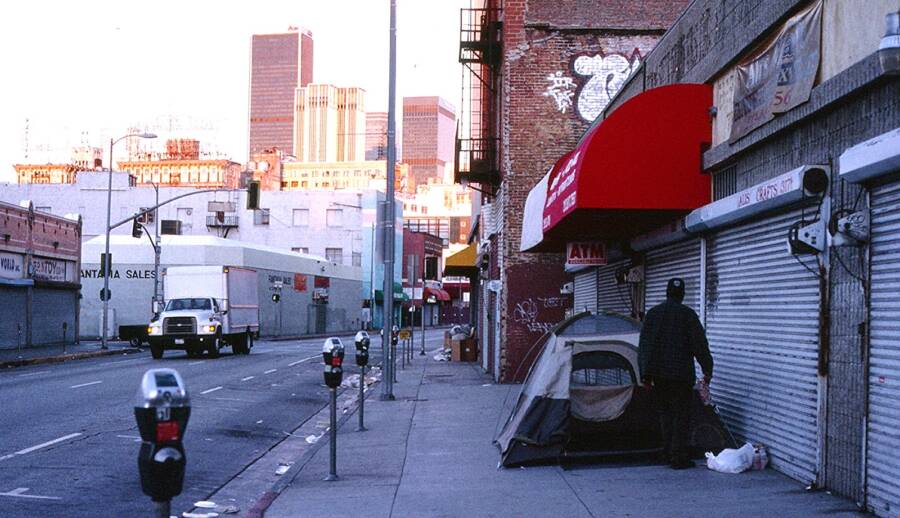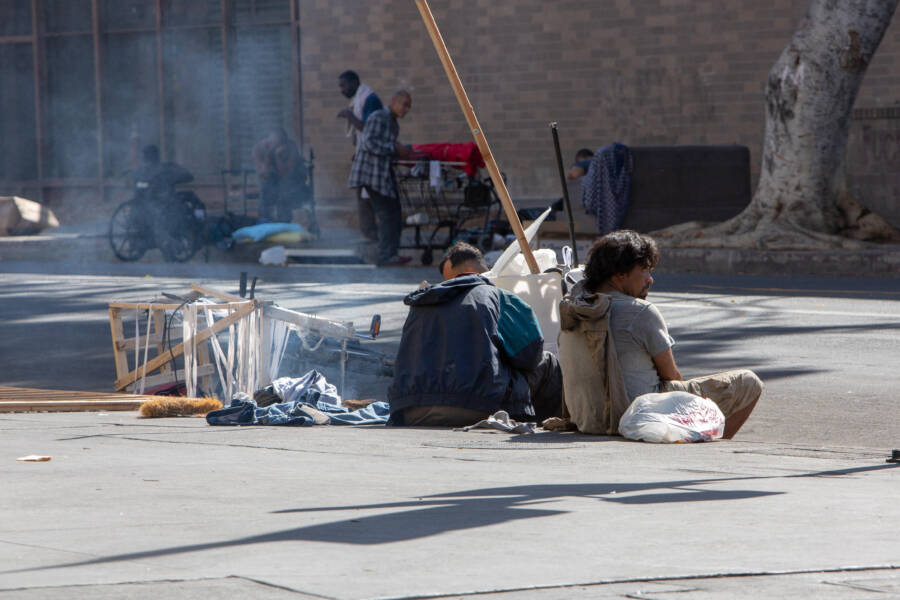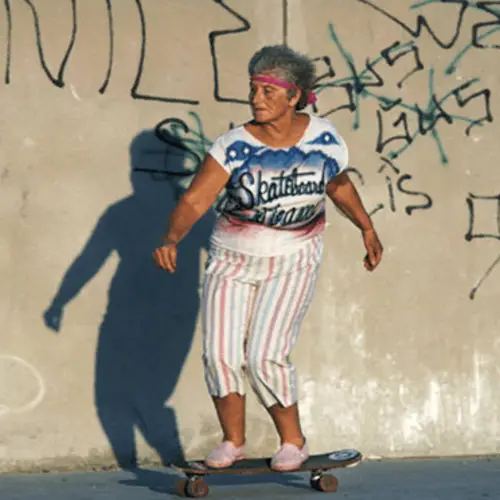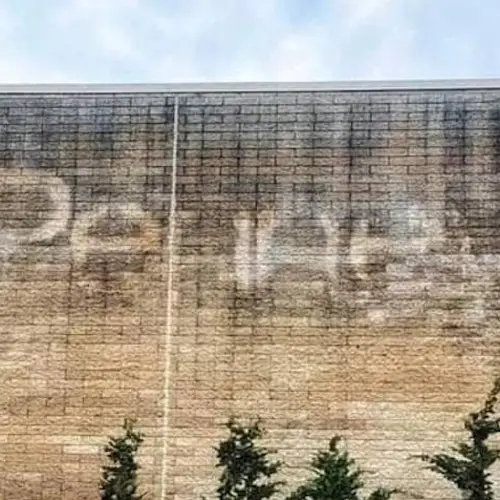Since the Great Depression, Skid Row in Los Angeles has been infamous for its condensed homeless population, poverty, and crime.
Los Angeles is known for its sunny beaches and Hollywood stars. But the city has also become notorious for its Skid Row neighborhood, where thousands of homeless people live across more than 50 city blocks.
Though this area may seem like a modern problem, and a sharp contrast to L.A.’s glittering luxury homes and five-star hotels, Skid Row has actually been part of the city for well over a century. Just a couple of decades after Los Angeles incorporated as a municipality in 1850, one region of the city became the “last stop” on early trains that traveled across the United States.
Before long, vagabonds, runaways, and other people with nowhere else to go began to arrive in the City of Angels — and in the future Skid Row.
Over the decades, Skid Row grew and grew. War veterans, drug addicts, and people who could no longer afford skyrocketing rents poured into the 54-block area in downtown Los Angeles, where many spent their nights in bedraggled tents on the streets. In the 1970s, the city's policy of "containment" all but ensured that Skid Row would be a permanent feature, concentrating most services for the homeless in that one area and attempting to "buffer" the people living there from the rest of Los Angeles.
Today, Skid Row is bigger than ever. Both economic crises and the city's housing policies have contributed to the area's growth in recent years. And, as the ongoing fentanyl epidemic ravages people living in the area, L.A. city officials have reluctantly admitted that there's no clear end in sight.
The Creation Of Skid Row In Los Angeles
The term "skid row" originates from Seattle. There, the Los Angeles Area Chamber of Commerce reports that "skid roads" were used by loggers to transport their timber to ports. But by the 1930s, the term "skid row" began to refer to run-down urban areas, where bars and brothels that had once served loggers began to cater to low-income people and the unhoused.
The birth of what became Skid Row in Los Angeles, however, came even earlier. In 1876, Curbed Los Angeles reports that the city became the last stop of the transcontinental railroad. Transients, seasonal workers, and displaced Civil War veterans began to pour into the city, especially near the railroad stop. And as a result, inexpensive hotels, bars, and brothels also began to spring up in the area, catering to the low-income customers.
"Southern California is getting to be something of a Mecca for the genus tramp of colder localities," an observer noted in 1889. "There is something very tempting to those gentry in a climate where the sun furnishes about as much fuel as is needed for comfortable warmth, and where great orange orchards are convenient to ease their hunger."
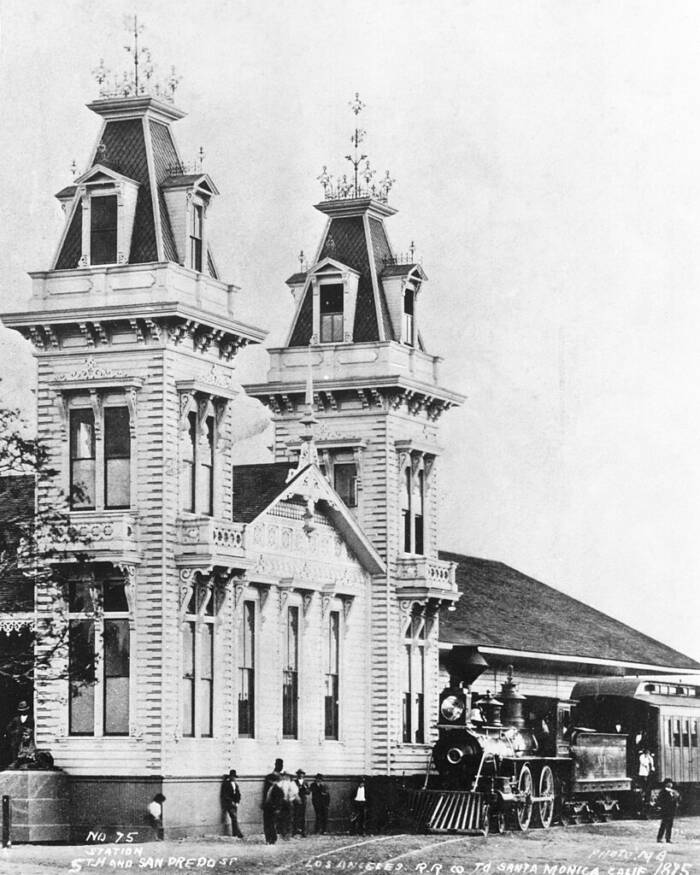
Public DomainA train stop at 5th Street and San Pedro Street in 1875. Since Los Angeles was at the end of the early transcontinental railroad, the city swiftly became the final destination for transients, Civil War veterans, and seasonal workers.
As these men began to live in single room occupancy hotels and hang out in bars in the area, this slice of Los Angeles began to be known as the "Hobo Corner." And by the turn of the century, some saw the area as a problem.
"The hobos are also killing that particular part of Los Angeles in which they have settled like a blight," the L.A. Times reported in 1902.
Before long, street lights were installed and a campaign was launched to get "hobos" off the street. Though the area changed, most people living in the area simply moved east — into what became Los Angeles' modern Skid Row.
The Spread Of Skid Row In Los Angeles
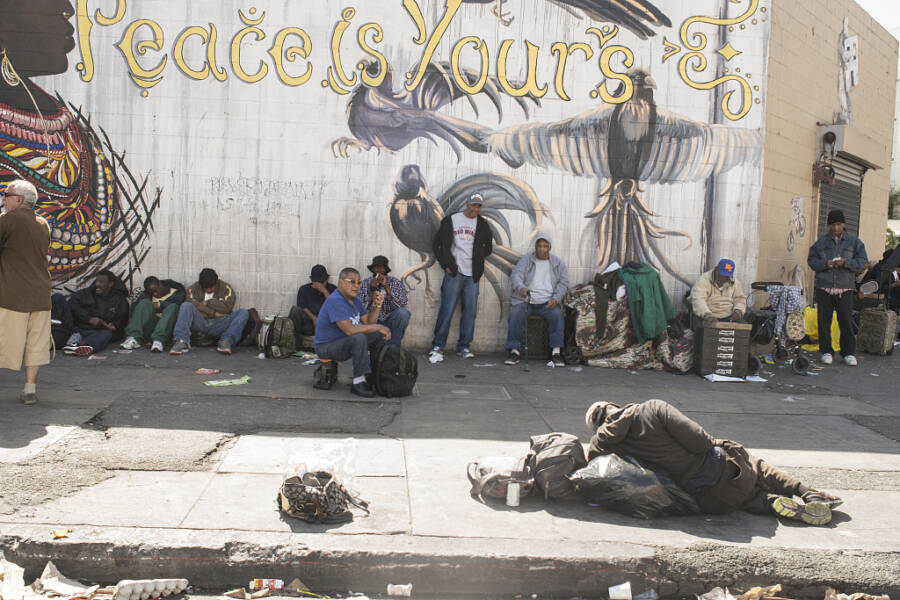
Library of CongressA crowd at 5th and St. Pedro in 2016.
Today, Skid Row in Los Angeles encompasses 54 city blocks. It is bound by 3rd Street in the north, 7th Street in the south, Main Street in the west, and Alameda Street in the east, according to the Los Angeles Area Chamber of Commerce. Today, thousands of men, women, and children live in the area.
Several factors contributed to the area's growth in the 20th and 21st centuries. For starters, Skid Row became something of a refuge for veterans returning from World War II and Vietnam, especially those who faced rejection in other places. The area offered support for drug and alcohol addicts, and served as a haven for people who felt out of place.
But in the 1960s and 1970s, decisions made by the city of Los Angeles made Skid Row more of a permanent fixture. In the 1960s, many of the neighborhood's small hotels, which had offered cheap and temporary housing, were demolished because they didn't meet fire and safety codes.
This created a scarcity of housing in the area.
"In total the loss of 50 percent of the housing stock — from approximately 15,000 units in the early 1960s to 7,500 units in the early 1970s — contributed to the displacement of a significant number of extremely low-income,
substance dependent and/or mentally unstable persons who had settled in Central City East," the Los Angeles Area Chamber of Commerce reports.
Then, in the 1970s, things got even worse. The city instituted a "containment" policy in 1975, which sought to concentrate homeless people and very-low-income housing in the same region and to "buffer" them from the rest of the city.
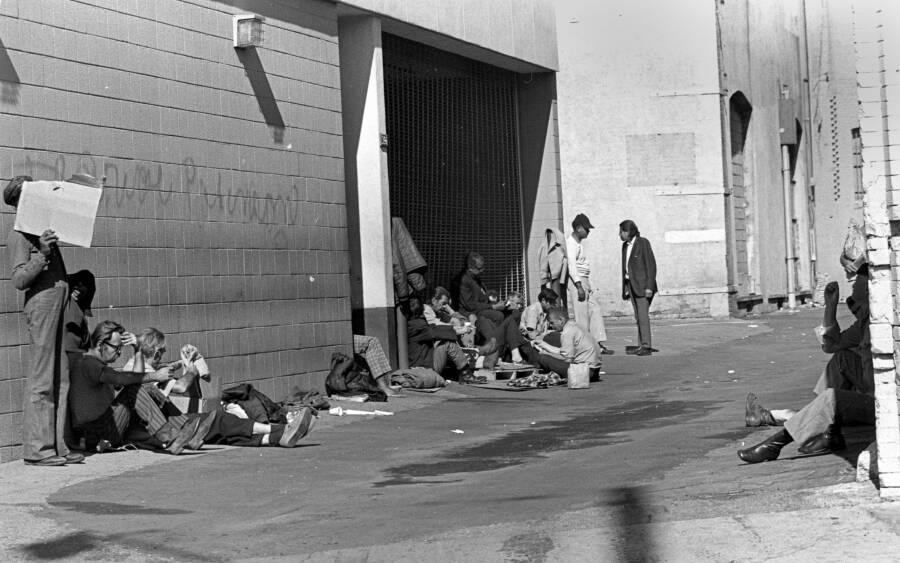
Dave Bagnall Collection/Alamy Stock PhotoSkid Row in Los Angeles. 1969.
"It's a warehouse zone," former Skid Row resident General Dogon told the 99% Invisible podcast. "[A] warehouse is where you store sh*t. So the idea was to push all of Los Angeles's unfavorable citizens into one area."
Eventually, it became common for local hospitals to drop off unhoused people in Skid Row, even if they didn't live there. And, today, the "containment" policy is widely considered a failure.
Meanwhile, more and more people poured into Skid Row as time went on. The crack epidemic in the 1980s made the homeless crisis in the city even worse, the recession in the 1990s brought an increase of women and children to the area, and the bursting of the housing bubble in the early 2000s created extremely difficult economic times for people in the area.
The city often tried to crack down on homelessness, but bringing more police or instituting stricter laws in Skid Row did little to help. As the Daily Beast reported in 2015, about 14.5 percent of homeless people in Los Angeles had "serious alcohol problems and a lifetime diagnosis of schizophrenia" at that point. But at the time, police in the city had only 36 hours of mental health training (now, 40 is required), meaning they were often ill-equipped to respond to people having mental health crises.
And in recent years, the problems in Skid Row have only increased.
Homelessness In Los Angeles Today
As of July 2023, there are some 46,000 homeless people in Los Angeles. An estimated 5,000 of them live in Skid Row, in tent encampments, cars, or nearby homeless shelters. (Some estimates put that number as high as 15,000.) And city officials say that there's no end in sight to the city's homelessness problem, which has been steadily growing.
"We really need to normalize the fact, unfortunately, that we're living in a crisis," Los Angeles Mayor Karen Bass said while renewing her administration's emergency declaration on homelessness.
Bass added: "This is a crisis that we know is going to be ongoing. And it requires us to have sustained focus and effort."
As LAist reports, there are several reasons for the continuing crisis of homelessness in Los Angeles, and specifically on Skid Row.
For starters, people are falling into homelessness at a fast rate. Though advocacy groups are able to place some people in permanent housing, they can't keep up with the inflow of new people who need help. This is due to the lack of affordable housing and skyrocketing rents in the city.
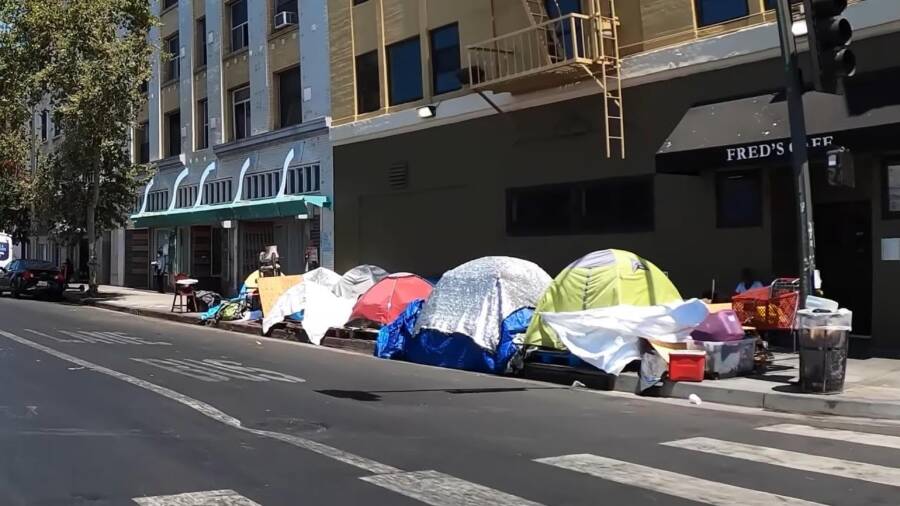
YouTubeTents on Skid Row in 2023.
Indeed, rent is climbing faster than the average salary. At the same time, millions of extremely affordable apartments (under $600 a month) have disappeared from the housing supply. LAist reports that many of these buildings were condemned or demolished, or they were taken off the market. And while new, affordable housing is being built, it's being done at a slow rate, and developers often face restrictive zoning laws and "NIMBY" neighborhoods that do not want lower-income people living nearby.
In addition, Skid Row is struggling with the fentanyl crisis, which has caused tens of thousands of overdose deaths across America in recent years.
"There are gangs who are pretending to be homeless and use the tent encampments to sell fentanyl and other drugs," LAPD senior lead officer Deon Joseph told The New York Post. "The cocaine and heroin epidemics were bad enough, but you mix that with fentanyl, there are now even more overdose deaths. It's probably the worst I've ever seen in over 20 years."
Thus, the area continues to be a hotbed of homelessness, drug use, mental health crises, sexual assault, and even human trafficking. And as city officials like Bass have noted, that doesn't seem like it will change anytime soon.
Look through 44 photos of Skid Row above, from its beginning as a railroad terminus, to the epicenter of the homeless crisis in Los Angeles it is today.
After looking through these images of Skid Row in Los Angeles, peruse these gritty photos of Gary, Indiana, the "Most Miserable City in America." Or, check out this gallery of abandoned buildings in Detroit.


